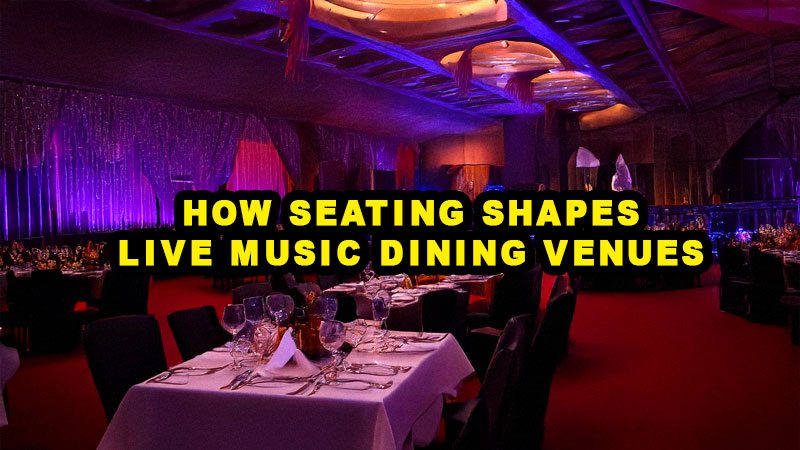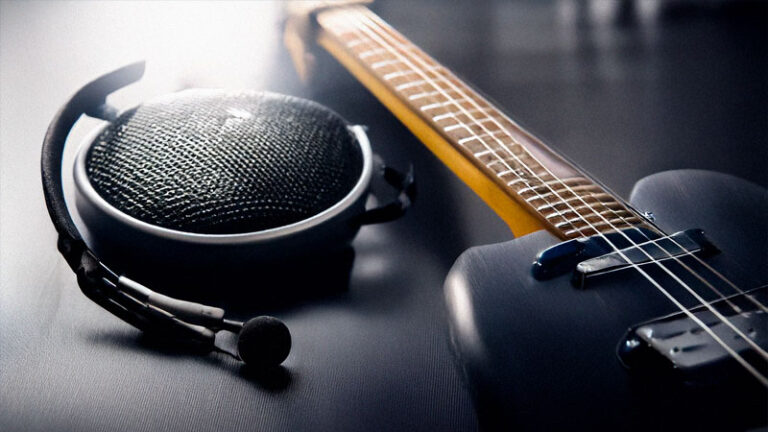When the first note hits and the lights dim, the experience of a live-music dining venue begins long before the performance itself. It starts with how the space feels, how the chairs invite guests to stay, and how the layout makes sound and sightlines come alive. In restaurants that double as music stages, furniture becomes part of the performance. Commercial-grade furniture, such as restaurant chairs, tables, and bar stools, shapes how guests connect with both their meals and the music. The right seating turns a show into an experience worth repeating, blending comfort, acoustics, and design into a single atmosphere that sings.
Designing for Sound and Sight
In a live-music restaurant, furniture placement determines how energy moves through the room. Guests need clear sightlines to the stage, but also enough intimacy to enjoy dinner without feeling lost in the crowd. Well-planned seating, arranged in arcs or subtle tiers, lets every guest feel part of the performance while keeping movement fluid and sound balanced.
Upholstered chairs soften echoes, while wooden or metal finishes preserve brightness. Bar stools placed at varying heights create visual rhythm and ensure that even guests seated farther back can see the stage. The best venues use furniture not only as décor but as a tool of acoustic design. Each chair and table contributes to the soundscape, helping the room itself perform.
Comfort that Keeps the Audience Engaged
When live music meets dining, comfort becomes essential. A performance can last hours, and seating must support both the body and the mood. Ergonomic restaurant chairs and high-quality bar stools help guests feel relaxed, allowing them to lose themselves in the show. Comfortable seating is what keeps audiences engaged, ensuring their attention stays on the performance, not on the stiffness of a chair.
Many successful venues now invest in commercial-grade seating made for long evenings. Thick cushioning, proper back support, and breathable fabrics transform a night out into an experience of ease. When guests feel comfortable, they stay longer, order more, and remember the venue as a place they want to return to. Good seating doesn’t just fill a room; it keeps the music alive long after the final chord fades.
Material Choices that Set the Tone
The soul of a live-music restaurant often starts with its materials. Velvet upholstery creates a sense of vintage jazz and intimacy. Leather chairs paired with metal bar stools suit modern rock or industrial-inspired spaces. Natural wood, on the other hand, brings warmth and texture, softening the look of a stage while supporting rich acoustic tones.
Durability also matters. Drinks spill, tables vibrate with basslines, and the constant shuffle of guests tests every surface. High-quality restaurant furniture resists that wear without losing its appeal. Many designers mix metal frames with padded seats to blend strength and comfort. These materials shape how the audience feels, how the light reflects, and how the music resonates in the air.
Layouts that Encourage Flow and Connection
Every place where you can hear live music is a dance of mood and movement. How people engage, move, and feel during a performance is affected by the way the tables and chairs are set up. The ideal places are both open and cozy. There are round tables near the stage that make it easy for people to talk to each other, and booth seating along the walls that lets diners eat in peace without missing any of the entertainment.
The choreography has a unique place for restaurant bar chairs. They connect the dining area and the bar, making it easy for customers to go from one portion of the facility to another. Some restaurants include modular seating that can change with the atmosphere of the night, going from dinner service to live music without compromising style or comfort. This flexibility makes the rhythm of each night a little different.
Visual Identity through Seating Design
A live-music venue’s character is as much visual as it is auditory. The furniture sets the tone long before the music begins. Deep colors, curved silhouettes, and layered textures all echo the sound style of the venue. The gleam of a table top under soft lighting or the shape of a chair back against the stage lights helps define the atmosphere.
Custom furniture deepens that connection. Engraved details, stitched patterns, and coordinated color palettes can reinforce a restaurant’s identity. When the seating mirrors the stage design or lighting cues, the entire room feels composed, as if the décor and performance are telling the same story. In a well-designed space, the eyes and ears share the same experience.
Balancing Functionality and Aesthetics
The balance between form and function is what makes a place successful. People who run businesses need to think beyond looks. Stackable seats, easy-to-clean materials, and light tables are all good choices that make things go more smoothly every day. But none of these useful things should mean giving up style. A utilitarian object can seem fancy if you choose the right material or color that goes with it.
This balance is possible with restaurant furniture that is made for businesses. It can handle a lot of use and yet seem sleek and put together. The appropriate mix of function and style makes sure that the place not only functions well but also looks nice and welcoming.
Creating an Emotional Experience
What separates a great live-music restaurant from an average one is emotion. Every seat, every surface, and every bit of space plays a role in creating a feeling. Guests don’t simply hear the music; they experience it through the environment around them. Comfortable chairs and thoughtfully arranged tables make it easy to relax, listen, and connect.
Seating also influences social energy. Closer tables invite shared excitement, while more private arrangements create moments of quiet connection. The furniture becomes part of the storytelling, guiding mood and memory in subtle, lasting ways. When guests feel the space is tuned perfectly to their experience, the night becomes something more than entertainment; it becomes personal.
A Resonant Future
As live music dining changes, furniture will still be a big part of how visitors hear and feel the music. Venues are trying with modular design, sound-absorbing textiles, and eco-friendly materials that make the space more comfortable and sound better. Adjustable bar stools and lightweight, flexible designs are changing the way rooms can be used for both dining and performances.
Restaurants that have live music in the future will be those that consider furniture as more than just a need. It will belong to those who see every seat as part of the composition, every table as part of the rhythm, and every guest as part of the show. When comfort, sound, and style come together, the whole room becomes an instrument that plays to both the heart and the ear.





